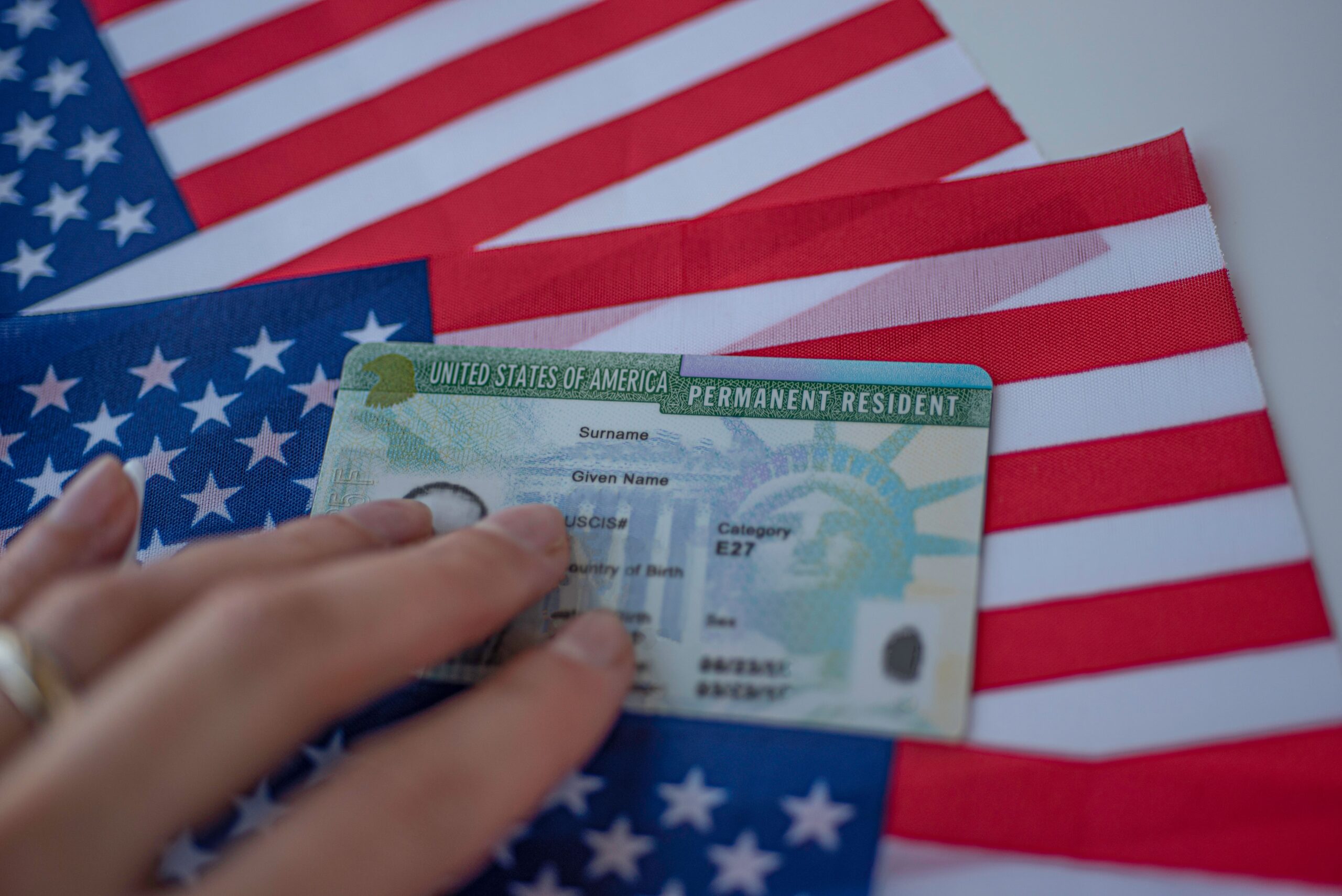Applying for a green card is an exciting step for any immigrant hoping to build a life in the U.S. Family-based green cards allow U.S. citizens or lawful permanent residents (LPRs) to sponsor certain relatives to live and work permanently within the United States. If you qualify, it’s important to understand the green card process steps you will need to take to achieve this milestone.
At the Law Office of Rosina C. Stambaugh, we are dedicated to helping families complete the immigration process through compassionate, experienced help. We guide clients through each step, ensuring they have the support needed to achieve their immigration goals.
What Are the Main Steps to Apply for a Family-Based Green Card?
How do I apply for a family-based green card? Are the steps to get a green card through marriage different from those necessary to apply for a green card based on a parent-child relationship? These are common questions.
Generally, the steps to apply for a green card after marriage are the same as those to apply for green cards based on other family relationships. They include the following:
- Step one—verify immigrant’s eligibility for a green card;
- Step two—sponsor submits an immigrant visa petition;
- Step three—immigrant submits a green card application;
- Step four—green card interview; and
- Step five—receive a decision.
An immigration lawyer can guide you through each step, minimizing headaches and helping you understand what to do and what to expect. Now, let’s take a look at the process in a little more detail.
Green Card Process Step 1: Verify Your Eligibility
Verifying that you meet the eligibility requirements is crucial before beginning the green card application process. Family-based green cards fall into two categories: immediate relative and family-preference visas.
Immediate Relatives
Under immigration law, immediate relatives are:
- Spouses of U.S. citizens,
- Unmarried children under 21 of U.S. citizens, and
- Parents of U.S. citizens aged 21 or older.
Immediate relative (IR) visas are exempt from annual visa limits, meaning there is no waiting list. This provides a faster path to a green card.
Family Preference
The family preference category covers several subcategories:
- First preference or F1—unmarried adult children (21 or older) of U.S. citizens;
- Second preference F2A—spouses and unmarried children (under 21) of LPRs;
- Second preference F2B—unmarried adult children (21 or older) of LPRs;
- Third preference or F3—married children of U.S. citizens; and
- Fourth preference or F4—siblings of U.S. citizens.
Family preference categories have different waiting periods and priority levels based on the number of visas available each year. Applicants in these categories often face longer processing times due to annual visa limits and higher demand.
Ineligibility
You may also be ineligible for a green card, even if you have a relative who can sponsor you. Common reasons someone may be ineligible include:
- Past immigration violations,
- Unlawful presence,
- Criminal history, and
- Fraudulent use of documents.
With the help of an immigration lawyer, you can sometimes successfully ask the government to waive your ineligibility.
Step 2: File Form I-130 (Petition for Alien Relative)
The first official step in applying for a family-based green card is the U.S. citizen or LPR sponsor filing Form I-130, Petition for Alien Relative, with U.S. Citizenship and Immigration Services (USCIS). USCIS uses Form I-130 to determine that the sponsor and intended immigrant have a qualifying family relationship, meaning they fall into one of the family-based green card categories.
Along with Form I-130, the sponsor submits supporting documents that prove the sponsor and immigrant are related by blood or marriage. These documents include the following:
- Marriage certificates,
- Birth certificates, or
- Financial records.
You also have to pay a filing fee.
Step 3: Submit the Green Card Application
How immigrants apply for a green card depends on whether they are in the U.S. or abroad. If the immigrant is in the U.S. and has good legal status, they may apply with USCIS through a process called adjustment of status. If they are outside the U.S., they apply with a U.S. Consulate or Embassy near them. In both situations, you need to include specific supporting documents.
Adjustment of Status
To adjust your status, you file Form I-485, Application to Register Permanent Residence or Adjust Status. Along with your I-485, you submit supporting documents and fees, including proof of your current legal status.
Concurrent Filing
If you are applying for adjustment of status through an IR visa or the Visa Bulletin indicates visas for applicants in your visa category are current, you can file your Form I-485 at the same time as your Form I-130. This is known as concurrent filing.
Consular Processing
If the immigrant lives abroad, they begin the consular processing process by submitting a Form DS-260, Immigrant Visa and Alien Registration Application, through the Department of State’s online portal. Along with your DS-260, you’ll submit supporting documents and pay the required fees.
Additional Documents
During the application process, you need to provide additional information and documentation, including:
- Form I-864, Affidavit of Support—to show that you will not need to rely on government assistance in the U.S.;
- Form I-693, Report of Medical Examination and Vaccination Record—must be completed by a USCIS-designated civil surgeon; and
- Fingerprints and photographs (biometrics)—to enable the government to perform a background check.
Form I-693s expire, so you may want to wait to schedule your examination until you receive a notice scheduling you for a green card interview.
Step 4: Green Card Interview
After you submit your application and provide the necessary documents, USCIS or your consulate schedules a green card interview. There, a USCIS or consular officer determines whether you are eligible for a green card.
To prepare for your interview, thoroughly review everything you provided to USCIS, gather all required documents, and practice. An immigration attorney can help you identify specific areas the interviewer may focus on and help you practice your answers.
Step 5: Receive Decision
After the interview, the USCIS or consular officer decides whether to issue you a green card. If approved, you receive a green card and the right to live and work permanently in the U.S. The officer may request additional information before they can make a decision, which you should provide promptly. If the officer denies your application, you may have options to appeal or reapply, depending on the reason for the denial.
Moving Forward with a Family-Based Green Card Application
Applying for a green card can be complicated, but an experienced immigration attorney like Rosina C. Stambaugh can help. We are dedicated to helping immigrants and their loved ones navigate the U.S. immigration system. Whether you need guidance on eligibility, support with document preparation, or representation during the interview process, we are here to help. Contact us today.






